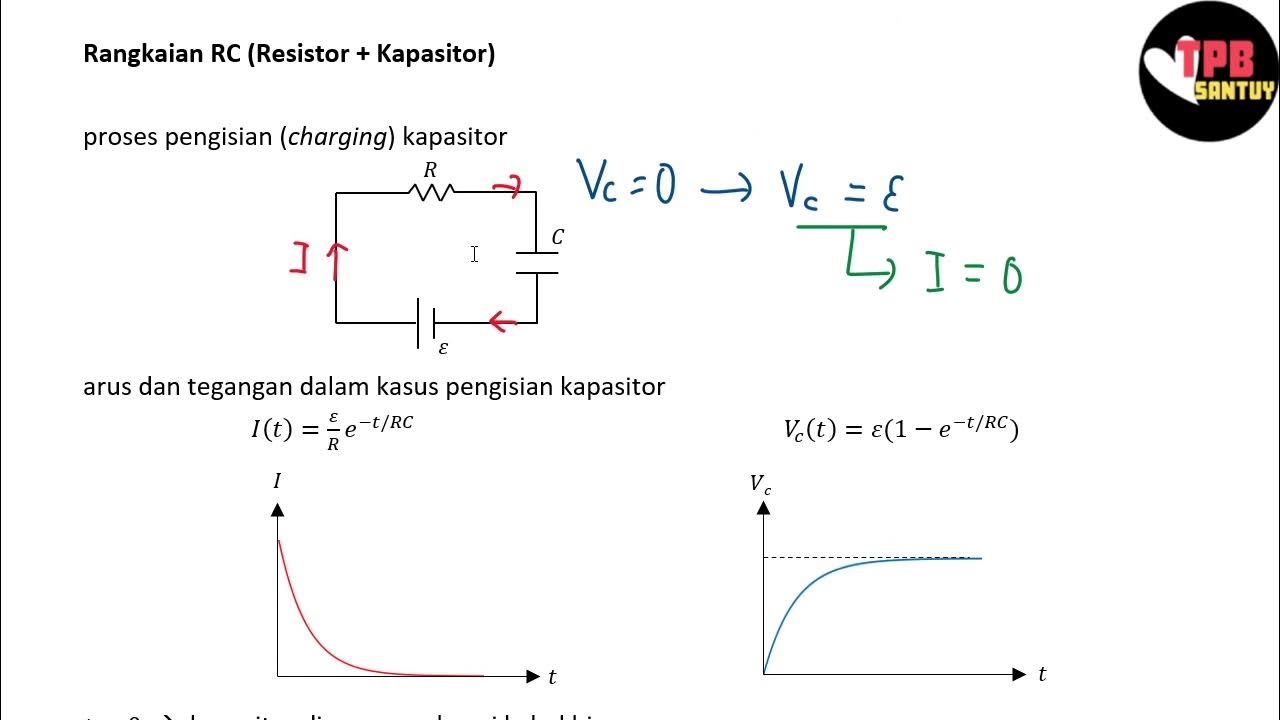Mastering Nodal Circuit Analysis: Solving Complex Electrical Networks
Summary
TLDRThe video explores a systematic approach to analyze an electrical circuit for determining the current through resistor R1. By identifying unknown nodes and applying Kirchhoff's Current Law (KCL), the speaker outlines a step-by-step method to simplify the circuit and derive equations based on current and voltage relationships. The process involves substituting voltages at nodes A and B, leading to a final calculation that reveals the current through R1 to be approximately 2.09 mA. This methodical analysis not only aids in understanding the specific current but also enhances comprehension of circuit dynamics.
Takeaways
- 🔍 Takeaway 1: The objective is to find the current flowing through resistor R1 in the circuit.
- 🛠️ Takeaway 2: The analysis begins by identifying unknown nodes and their corresponding voltages.
- 📝 Takeaway 3: The circuit is simplified for easier analysis by redrawing it with clear labels.
- 🔄 Takeaway 4: Nodal analysis is used to set up equations based on Kirchhoff's Current Law (KCL) at each node.
- 💡 Takeaway 5: At node A, the equation relates the incoming and outgoing currents, incorporating the supply voltage.
- 🔗 Takeaway 6: The equations are formed by summing the currents and considering their directions in the circuit.
- 📊 Takeaway 7: After establishing equations, the next step is to substitute known values to simplify and solve for unknowns.
- ⚖️ Takeaway 8: Two equations are developed for the two nodes, which are then manipulated to find the voltage at each node.
- ⚡ Takeaway 9: The current through R1 (I1) can be calculated once the voltage at node A (VA) is known.
- 📈 Takeaway 10: The final result shows that the current flowing through R1 is approximately 2.09 mA.
Q & A
What is the main objective of the analysis method discussed in the transcript?
-The main objective is to find the current flowing through the resistor R1.
How is the unknown node identified in the circuit?
-The unknown node is identified by recognizing the node with a voltage reference equal to 0 volts.
What components are present at node A?
-Node A has four branches: a 5K resistor (R1), a current source of 3 mA, a 3K resistor (R2), and a 4K resistor (R4).
What are the current directions assigned in the circuit?
-The current directions are assigned as follows: current i1 flows into node A, while currents i2, i3, and i4 flow out from node A.
What is the formula for applying Kirchhoff's Current Law (KCL) at node A?
-According to KCL at node A, the equation is i1 = i2 + i3 + 3 mA, where i1 is the current flowing into node A.
How is the value of current i1 expressed in terms of the supply voltage and voltage at node A?
-Current i1 is expressed as i1 = (10V - VA) / 5K.
What equation is formed by applying KCL at node B?
-At node B, the equation formed is I3 + 2 mA = I4, where I3 is calculated based on voltages VA and VB.
What is the relationship established between VA and VB from the equations?
-The relationship is VA = 3VB - 2 mA after simplifying the equations derived from KCL at node B.
What values are substituted to solve for VA and VB?
-Values from the established equations are substituted into one another to find VA and VB, leading to VA = -0.476V and VB = 2.5V.
How is the current through resistor R1 (i1) calculated?
-The current through R1 (i1) is calculated using the formula i1 = (10V - VA) / 5K, which results in approximately 2.09 mA.
Outlines

Esta sección está disponible solo para usuarios con suscripción. Por favor, mejora tu plan para acceder a esta parte.
Mejorar ahoraMindmap

Esta sección está disponible solo para usuarios con suscripción. Por favor, mejora tu plan para acceder a esta parte.
Mejorar ahoraKeywords

Esta sección está disponible solo para usuarios con suscripción. Por favor, mejora tu plan para acceder a esta parte.
Mejorar ahoraHighlights

Esta sección está disponible solo para usuarios con suscripción. Por favor, mejora tu plan para acceder a esta parte.
Mejorar ahoraTranscripts

Esta sección está disponible solo para usuarios con suscripción. Por favor, mejora tu plan para acceder a esta parte.
Mejorar ahoraVer Más Videos Relacionados

Video Pembelajaran Modul 4 & 5 Praktikum Rangkaian Listrik 2024/2025 (FH)

KVL and KCL Examples (Circuits for Beginners #12)

thevenin's theorem explanation | Thevenin's Theorem Solved Example Problem

How to Identify the Components of a Basic Circuit

Rangkaian RC (Resistor-Kapasitor) | Rangkaian DC | Part 5 | Fisika Dasar

Electrical Engineering: Ch 8: RC & RL Circuits (11 of 43) The L/R Time Constant
5.0 / 5 (0 votes)
